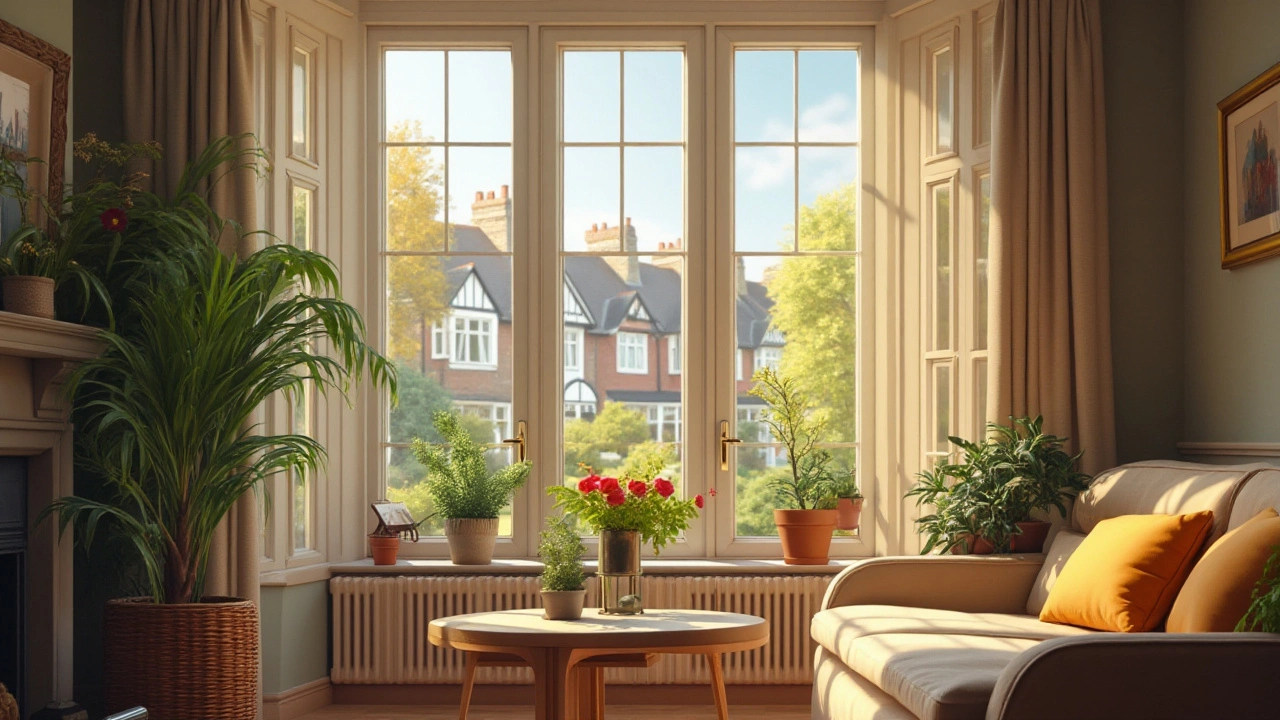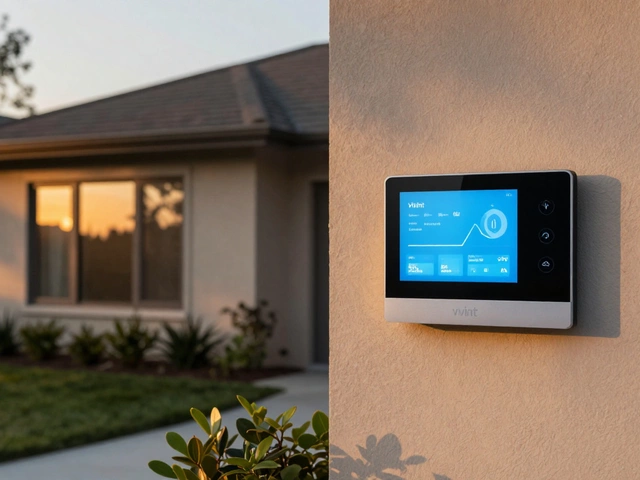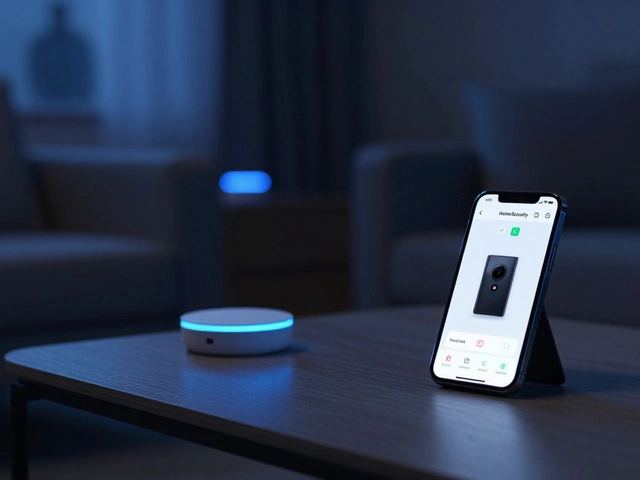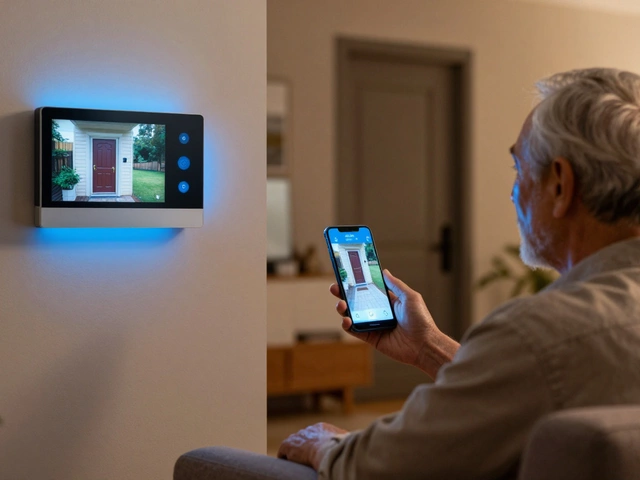Securing one's home is an essential step in protecting family and personal property. Burglar alarm systems have evolved significantly over the years, offering homeowners a reliable means to deter intruders. But with a myriad of options available, choosing the most effective alarm can seem daunting.
This guide aims to demystify the world of burglar alarms, providing insights into the types available and the technology they use. We'll also explore practical tips to ensure your system runs smoothly and efficiently. Whether you're a first-time buyer or looking to upgrade, understanding these aspects can help you make an informed decision and bolster your home's security.
- Understanding Types of Burglar Alarms
- The Technology Behind Alarm Systems
- Comparing Wired and Wireless Alarms
- Choosing the Right Features for Your Needs
- Tips for Installation and Maintenance
- Enhancing Security Beyond Alarms
Understanding Types of Burglar Alarms
When it comes to protecting your home, knowing the differences between various burglar alarm systems is crucial. The most common types include audible alarms, monitored systems, and unmonitored setups. Audible alarms are perhaps the simplest and most traditional form of home security. These systems are often characterized by their loud sirens designed to scare off intruders and alert anyone nearby to a potential break-in. The effectiveness of these alarms often hinges on the reaction of your neighbors or anyone within earshot. However, these systems may not be ideal if your property is isolated or in a community where neighbors might not hear or respond quickly.
On the other hand, monitored alarms provide an added layer of security. These systems are linked to a central monitoring station that is notified when an alarm is triggered. Upon receiving a signal, the monitoring service will call the homeowner and potentially dispatch emergency services if necessary. This type of system can be a good choice for those who want assurance that a break-in will prompt immediate action regardless of their presence. Pricing can vary significantly based on the company, with monthly fees for monitoring. It's crucial to consider whether the peace of mind offered by a monitored system justifies the ongoing cost.
Unmonitored systems, by contrast, are typically more DIY in nature. These alarms might connect to a homeowner's smartphone, allowing them to receive alerts directly and decide how to respond. While this can save money by eliminating monthly fees, it also places more responsibility on the homeowner to take action during an alert. As technology advances, many unmonitored systems now offer smart integration features. For example, some models allow for video verification, where cameras record or stream footage when the alarm is triggered. This can provide visual confirmation of a threat, enabling swift and informed decisions.
According to a report by the U.S. Department of Justice, "homes without security systems are up to 300% more likely to be broken into."
In choosing between these systems, consider your lifestyle, budget, and the level of security you require. For instance, if you travel frequently, a monitored or smart unmonitored system may provide you with more peace of mind compared to a basic audible alarm. Many modern systems also offer hybrid solutions, combining elements of monitored and unmonitored systems for a more comprehensive approach. Understanding these types helps homeowners select a home security method that aligns with their specific needs.
The Technology Behind Alarm Systems
In today's world, burglar alarm systems employ a blend of sophisticated technologies to offer unparalleled home security. These systems have come a long way from the simple tripwires and bells of the past. Modern alarms incorporate a variety of sensors that detect movement, sound, and even changes in heat. One common sensor is the infrared detector, which senses body heat and movement and is often used in combination with microwave sensors to reduce false alarms. Together, they ensure only genuine intrusions trigger alerts.
Many home security systems today are also integrated into smart home networks, enabling homeowners to control their alarms via smartphones or tablets. This integration allows users to monitor their property in real-time from anywhere, offering peace of mind whether they are at work or on vacation. The technology behind these systems isn't just about detection; it's also about connectivity and compatibility with other devices. Systems that work with voice-activated assistants like Amazon Alexa or Google Assistant are increasingly popular, showcasing the trend towards comprehensive home automation.
"Technology is redefining home security. It's no longer just about alarms; it's about control, connectivity, and complete security confidence," says James Riley, a noted expert in home security technology.
Aside from detection and connectivity, the reliability of a burglar alarm system can be attributed to its resilience against tampering. Tamper-proof designs, such as encrypted wireless signals, ensure that the systems remain functional even if an intruder attempts to disable them. For areas where internet and cellular signals are patchy, dual-path communication systems offer a reliable backup, switching to a phone line if other channels fail. Such innovations have made alarms adaptive, capable of countering varied intrusion scenarios. Additionally, smart systems often come with periodic self-checks to ensure they are functioning correctly and to alert the homeowner to any needed maintenance.
Many systems also feature high-decibel sirens to distract intruders and alert neighbors. These auditory alerts are crafted to create a psychological barrier, discouraging potential burglars. Some systems even have the ability to send alerts to local authorities, depending on the service plan selected. Besides, the installation of surveillance cameras as part of the alarm system setup provides both a visual deterrent and concrete evidence in the unfortunate event of a break-in.
For those who appreciate a data-driven approach, consider this: a recent survey indicates that homes without an alarm system are nearly three times more likely to be targeted by burglars than homes with one. When comparing wired versus wireless systems, it's noteworthy that wireless systems have seen a sharp rise in popularity. They offer ease of installation and the flexibility to be reconfigured as needed, though wired systems are praised for their stability and immunity to signal interference. This trend is supported by statistics showing over 70% of new installations are now wireless.
Advanced alarm systems today don't just stop at intrusion detection—they integrate with other security measures such as smoke detectors, carbon monoxide alarms, and even flood sensors for comprehensive home protection. This all-encompassing approach to alarm systems creates a robust net of security, ensuring that at any given moment, even the subtlest threats are detectable. As technology continues to evolve, so do these systems, constantly pushing the boundaries of what's possible in safeguarding the home environment.
Comparing Wired and Wireless Alarms
Deciding between a wired and wireless alarm system can be a pivotal choice in creating a secure environment for your home. Each type of system carries its own set of advantages and limitations which can significantly influence your home security strategy. Wired alarms have been the traditional choice, trusted by many for their reliability. They often require professional installation, as they connect various components through physical cables that are embedded throughout your home. This connectivity ensures a stable signal with little interference, making them less susceptible to hacking. However, the installation process can be invasive, potentially requiring structural modifications, which might not be ideal for all homeowners, especially in heritage-listed or rental properties.
On the other hand, wireless alarms offer a greater degree of flexibility and ease of use. These systems communicate using radio frequency, making them a popular choice for modern homes due to their swift installation and lack of invasive procedures. Wireless systems adapt easily to changes, such as remodeling, making them ideal for those who anticipate moving or altering their living space. However, they're often dependent on battery power, requiring diligent maintenance to ensure continual functionality. In the bustling world of smart devices, wireless systems seamlessly integrate with home automation systems, allowing users to monitor security remotely through smartphones or tablets.
A study conducted by a notable security firm revealed that wireless systems are unexpectedly on the rise, with adoption rates increasing by 20% over the last year. This shift is largely attributed to the increased demand for smart home compatibilities and user-friendly interfaces.
According to Susan Young, a security technology analyst, 'The evolution of wireless technology and its integration with smart home devices is a game-changer. Homeowners now demand not just security but connectivity and control at their fingertips.'While this popularity surge is noteworthy, it does come with a catch; wireless networks can be prone to signal interference from other household devices or external sources, a challenge less of a concern for wired systems.
For those torn between the two, it may be interesting to note a blend of both systems is possible. Hybrid security solutions combine the robust reliability of wired systems with the convenient, modern features of wireless technology. Experts predict this hybrid approach will dominate the security market in the years to come. Thus, choosing between a wired and wireless system ultimately hinges on your personal needs, the infrastructure of your home, and your willingness to balance between installation intricacies and convenience. Whatever path you choose, ensure it aligns with your security priorities and lifestyle needs.
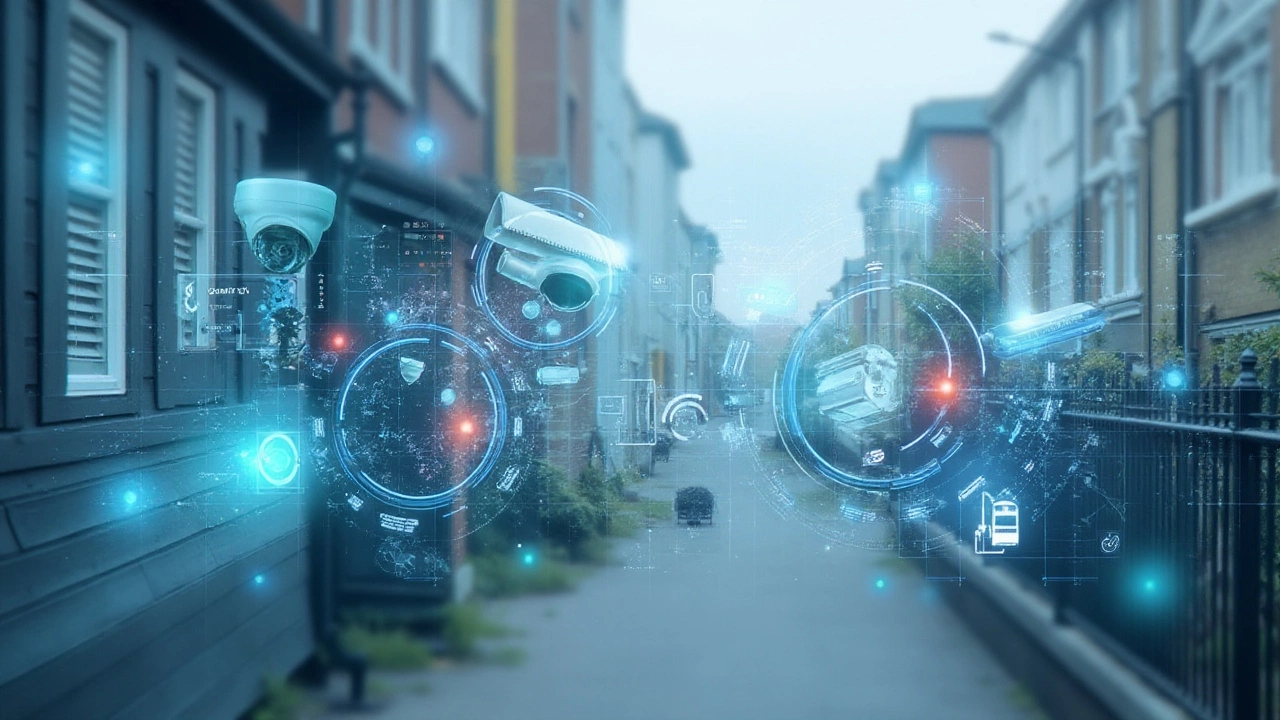
Choosing the Right Features for Your Needs
When it comes to selecting the right burglar alarm, understanding which features best align with your specific security needs is crucial. Each home has its unique requirements based on factors such as its location, size, and the presence of entry points. Modern home security systems are equipped with a vast array of features, each catering to various aspects of protection and convenience. Some key features to consider include motion detectors, door and window sensors, smart home integration, and cameras. Motion detectors are usually a staple, designed to sense any movement within specific zones of your home and trigger the alarm system. This feature works well in detecting unauthorized activity, particularly during the night or when you’re away on vacation. Meanwhile, door and window sensors are essential for alerting you when points of entry are breached, often offering both sound and visual notifications.
Integration with smart home devices is increasingly popular, allowing you to control your alarm system with your smartphone, giving you access whether you're at home or abroad. This connectivity lets you monitor your home in real time and even receive alerts in case of a breach, aiding in a swift response. Additionally, consider the inclusion of surveillance cameras. They provide not only a deterrent to potential intruders but valuable visual evidence in the unfortunate event of a break-in. Choosing systems with HD video capabilities and night vision will ensure clear footage at all times. A truly comprehensive system often combines multiple security measures, such as alarms and cameras, offering layers of protection.
It's important not to overlook practical features like a backup power source for your alarm system, ensuring it remains operational during power outages. Moreover, user-friendliness is paramount. Seek systems with intuitive control interfaces, as these will enable you to efficiently manage your home’s security settings. Pricing can vary significantly across systems, so it’s wise to assess what features are absolute must-haves for your peace of mind and what you can compromise on. In an engaging excerpt from a report by the National Crime Prevention Council, it's highlighted that "over 60% of burglaries occur through forced entry on doors and windows, making it essential that these areas are fortified in your security strategy."
An industry expert once asserted that "a security system is only as effective as the user’s understanding of its capabilities and limitations." Assessing the level of service, such as monitoring options provided by the vendor, can also influence system selection. While some systems offer professional monitoring, others may rely on self-monitoring, which requires a closer look at how comfortable you are with taking the reins of your own home security.
Another factor that might sway your decision is the brand's reputation and after-sales support. Great customer service can significantly enhance your experience, from the initial setup to any troubleshooting needs. Keeping your system updated and understanding the warranty terms could save you headaches down the road. Evaluate the value of local versus international brands, as some local providers may offer tailored solutions specific to threats prevalent in your area. The table below summarizes some popular features and what they typically entail for homeowners:
| Feature | Benefit |
|---|---|
| Motion Detectors | Identify unauthorized movement, particularly useful in unoccupied areas. |
| Door/Window Sensors | Notify of entries and breaches, serving as a primary alert system. |
| Smart Integration | Allows remote monitoring and control through smart devices. |
| Surveillance Cameras | Provide visual deterrence and evidence collection, supporting 24/7 monitoring. |
| Backup Power | Keeps the system running during outages, ensuring continuous protection. |
Ultimately, choosing the right alarm system features is a balance between needs, budget, and peace of mind. Reflecting on what fits best for your home environment will lead to a more informed and confident decision, securing your sanctuary effectively.
Tips for Installation and Maintenance
Installing a burglar alarm system can feel as complex as solving a puzzle. It's a DIY endeavor for some and a call-the-professional task for others. The key to nailing the installation is preparation and understanding the specific needs of your home. Consider the layout of your property, noting the most vulnerable entry points. You’ll typically find these at ground-level doors, large windows, or any other easily accessible areas. It's here that your alarm sensors will be most effective in deterring an ordinary intruder.
When setting up a system, remember that where you place each component matters as much as the type of alarm you choose. Sensors need to be installed where they can detect movement quickly, while control panels should be in a convenient yet out-of-the-way location to prevent tampering. For a wireless alarm system, ensure that all components are within the recommended distance of each other to maintain seamless communication. Meanwhile, wired systems might require a bit more planning with cable routing to keep your home aesthetically pleasing and the system reliable.
Regular Testing and Upkeep
Once your system is up and running, regular maintenance is your best friend. Ensure all components are operating effectively by performing routine checks. Test sensors, alarms, and cameras to ensure their sensitivity is up to your security standards. Don't overlook the importance of changing batteries where necessary to prevent unexpected failures. Many modern systems offer self-diagnosing capabilities or reminders for maintenance tasks, making the job easier for homeowners.
According to Security Today, "Regular testing and updating of security systems can reduce the risk of malfunction."
Ensuring that maintenance is part of your routine will also help keep false alarms at bay. A common nuisance to avoid, these can be triggered by anything from faulty equipment to an unexpected animal guest in your backyard. By keeping equipment in top shape, you'll be minimizing disturbances and maximizing peace of mind. Also, ensure that all users of the alarm system are properly trained in using it to avoid accidental activations.
Choosing Professional Help
If the idea of doing it all yourself seems overwhelming, you're not alone. Many people turn to professional installers for peace of mind and assurance that each element of the system is optimally placed. Experts can provide insights based on years of experience and knowledge of the latest home security trends. These professionals can also offer advice on improving an existing setup, leveraging newer technology that integrates well with older systems.
Maintenance contracts with professionals might appear as an additional expense, but they often pay for themselves. Not only do they bring expertise in detecting possible issues before they escalate, but they’re also equipped with advanced tools and methods for seamless system operation. It's an investment not only in equipment longevity but also in your ongoing security.
| Year | Household Security Investment |
|---|---|
| 2020 | $900 million |
| 2025 | $1.1 billion (projected) |
Remember, whether you're gearing up for a DIY installation or dialing a professional, staying informed and attentive to your system's needs will ensure that your home security is always at its peak performance.
Enhancing Security Beyond Alarms
When considering home security, it's important to remember that a burglar alarm is just one part of a comprehensive plan to protect your home. While alarms are undeniably effective deterrents, incorporating additional security measures can drastically reduce the risk of break-ins. These measures can include simple habits, such as ensuring all doors and windows are locked, to more sophisticated solutions, like installing surveillance cameras. Integrating these practices with an alarm system can create a layered defense that is more difficult for intruders to penetrate.
For starters, lighting plays a crucial role in securing your property. Motion-activated lights are an excellent way to startle potential intruders, making them think twice about approaching. These lights can be strategically placed around the perimeter of your home, particularly in areas that a burglar might use to gain access. Statistics have shown that well-lit homes are less likely to be targeted by criminals. It's a simple yet effective strategy that complements the alarm system beautifully.
An often-overlooked security measure is building strong relationships with neighbors. A neighborhood watch program can act as an informal security system. When neighbors keep an eye on one another's homes, it provides an extra set of eyes that can notice suspicious activity. Additionally, having a network of trust can expedite response times and ensure help is available quickly. As an example, community-driven initiatives have successfully reduced local crime rates in various areas.
“A sense of community is your first line of defense,” notes Sarah Thurman, an expert in urban safety and community engagement. “Neighbors who look out for one another can deter criminal activity just by being observant and making their presence known.”
Another key aspect of enhancing security is investing in sturdy hardware. This includes high-quality deadbolts on doors, security bars on windows, and reinforced frames that make it challenging for an intruder to force entry. Modern advancements have also led to smart locks that offer remote control and monitoring. While burglars can sometimes bypass basic locks, these enhanced options provide a formidable obstacle that can further safeguard your household.
In certain situations, adding a security camera system that integrates with your home security setup can offer additional peace of mind. Cameras serve as both a deterrent and a valuable tool for capturing evidence if a break-in occurs. With technological advancements, security cameras are more accessible, offering features such as night vision, cloud storage, and real-time alerts on mobile devices. This extension of your burglar alarm system not only deters potential burglars but also provides law enforcement with essential information in case of an intrusion.
By combining an effective alarm system with these additional security measures, you can create a comprehensive defense strategy tailored to your specific needs. This approach ensures that your home is not only protected when you're away but also fortified when you're present, offering peace of mind and a secure environment for you and your family.

